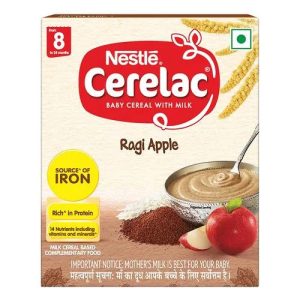While the landscape change keeps their fields flooded during the monsoon, the surrounding canals carry too little water post-monsoon, making paddy cultivation impossible throughout the year…writes Nisha Matamp
Farmers in Kerala are growing increasingly dependent on irrigation to grow paddy — despite the state receiving an average annual rainfall of 3,610.2 mm in 2021, far higher than the state average of 2,924.7 mm.
“Earlier, when labour wasn’t too expensive, paddy could be harvested twice a year. But by 2008, everyone around us began to level their fields to grow tubers and other perennial trees. We couldn’t because the new law (Kerala Conservation of Paddy and Wetland Act 2008) prevented us from converting our land. By then, the landscape around us had already changed, and we were unable to grow paddy anymore,” says Pothanmaanayil Joseph, a farmer from Pothy, Kottayam district who now grows grass with his cousins on three acres.
While the landscape change keeps their fields flooded during the monsoon, the surrounding canals carry too little water post-monsoon, making paddy cultivation impossible throughout the year.
“Years later, if government irrigation projects reach our village, we may be able to resume paddy cultivation,” Joseph adds.
Government irrigation projects haven’t reached Elamdesam panchayat in Idukki either. But unlike Joseph, VS Kareem says his fellow paddy farmers irrigate their farm with water from their nearby pond.
“If the November rains falter, we have to look for irrigation sources. In 2019, we incurred losses because we had to hire diesel-run motors to irrigate our fields, which are more expensive than electric motors,” says Kareem, who only cultivates paddy once a year.

Irrigation a necessity due to erratic climate
The sixth assessment report of the United Nations Intergovernmental Panel on Climate Change (IPCC) has predicted an overall rise in demand for irrigation water by 2080, causing a further decline in rain-fed agriculture.
According to 2019-20 Kerala agriculture statistics, 75.69 per cent of the paddy grown in the state was irrigated. This loss in rain-fed paddy cultivation is evident all through the three paddy seasons in Kerala — autumn (April-May to September-October), winter (September-October to December-January) and summer (December-January to March-April).
In 2005-06, the rain-fed paddy cultivated in autumn and winter were 79.8 per cent and 22.5 per cent, respectively, which dropped to 68.7 per cent and 4 per cent. Only summer rain-fed paddy recorded a slight rise from 0.08 per cent in 2005-06 to 0.16 per cent in 2019-20.
Some 120km to the west of Idukki, farmers had requested for irrigation to grow Pokkali rice, a highly rain-dependent paddy crop. The rising salinity in the coasts post-monsoon limits paddy cultivation to just the rainy season, when the downpour lowers the salinity of the land.
“Although we lost around 15 per cent of our rice to post-harvest moisture, we are still happy with this year’s (2021) produce,” says KA Thomas, who suffered losses in 2019 and 2020 due to dry spells. Fearing similar losses in the future, Thomas and his fellow Pokkali farmers of Kadamakudy in Ernakulam district had requested for irrigation.
“Due to erratic rains and frequent dry spells, rain-dependent paddy cultivation is nearly impossible in Kerala. Paddy requires 100 per cent soil moisture. It is difficult to revive paddy if the soil loses even 10 per cent to 20 per cent of its moisture,” says Babu Mathew, a retired irrigation officer.

Can irrigation prevent food insecurity?
Despite Kerala spending Rs 9,645.7 million on irrigation till 1990-91, exclusively to boost its paddy cultivation and attain self-sufficiency in food supply, paddy produce declined steadily. Ironically, despite the annual expenditure on irrigation, several traditionally irrigated paddy farms that relied on natural canals and ponds have either been lying fallow or converted to grow other crops. In 2020-21, current fallow constituted 54,255.40 hectares and fallow other than current fallow accounted for 42,751.70 hectares.
“As much as 70 per cent of the fallow land you see today is forced fallow,” says Mathew.
Irrigation projects were meant to raise paddy production to 2.1 million to 2.7 million tonnes annually, but in 2019-20, Kerala could only produce 500,000 tonnes of rice, while importing the rest from Andhra Pradesh and Karnataka. The IPCC report further estimates a 10 per cent to 30 per cent drop in rice production in India if the global temperature rises between 1 degree Celsius to 4 degree Celsius.
A thesis submitted by Basil Abraham, a research scholar from Kerala Agriculture University, Thrissur, predicts a further rise in irrigation needs through all cropping seasons in the future. The research placed special emphasis on Thrissur, which has the state’s second largest area under summer paddy.
The study also predicts a severe decline in rainfall in the coming years, which would raise the requirement for irrigation water by 200 billion litres to grow winter paddy and about 750 billion litres for summer paddy in Thrissur district.

The future of rice
While investing in irrigation may not be able to protect Kerala from food insecurity in the future, farmers and scientists have found different ways to grow paddy using much less water.
“In China, paddy is cultivated using drip irrigation. With proper technology, aerobic rice can be grown by ensuring that the ground is wet,” says Mathew, the retired irrigation officer.
“We tested the System of Rice Intensification (SRI) on several farms in Palakkad district; those farmers still grow paddy using this method. But other farmers (ones who practice traditional paddy cultivation methods) are unwilling to try SRI due to lack of schemes,” says Dr Karthikeyan, a scientific staffer at the Regional Agricultural Research Station, Pattambi.
“An acre of paddy can yield up to 2,800kg using the SRI method, while the traditional anaerobic cultivation means can only produce between 1,600kg and 1,700kg,” says P.K. Thankappan, a decade-old SRI convert in Palakkad. “But unlike the traditional methods, SRI doesn’t require the fields to remain flooded throughout the cultivation period, which results in rampant weed growth. It’s also difficult to find labourers for this method.”
Moreover, a closer look at the agriculture statistics report comparing 2008-09 to 2019-20 reveals that it’s the high-yielding varieties that demand more irrigation than the local varieties.
“If the local variety is cultivated scientifically, not only can it produce yield on par with high-yielding varieties, it also reduces the water required to grow paddy,” says Natarajan K., a retired agriculture officer who has been successfully cultivating a variety of local paddy in Palakkad on his 2 acres.
“I’ve never lost paddy to rains, except in the 2018 deluge,” says P. Bhuvaneshwari, a 62-year-old 2022 Karshakasree winner from Palakkad.
While her neighbours only grow paddy once a year, she still grows autumn and winter paddy. Around 12 years ago, she began with less than an acre of paddy farm. Today, her field spreads over 10 acres. She believes her chemical-free farming and rich soil biodiversity may have been preventing such losses.






